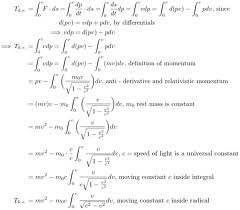
(Part 1)
Please read it together with Part 2 of this post. That link is here. Thank you.
________________________
That Einstein – Einstein the outside world knows – said:
E = mc2 .
You know, Theory of Relativity? Everybody knows it.
But this Einstein, my inner Einstein, says, T = mc2 .
Yes, T = mc2 .
T = mc2 ??
[You] : Are you joking with me? What the heck does it mean?
Well, wait. Let me explain.
The equivalence is described by the world-famous Einstein equation – in textbooks it is also called mass-energy equivalence equation:
E = mc2
Where E is energy, m is mass, and c is the speed of light in a vacuum. The formula is dimensionally consistent and does not depend on any specific system of measurement units. The equation indicates that energy always exhibits relativistic mass in whatever form the energy takes. Mass–energy equivalence does not imply that mass may be “converted” to energy, but it allows for matter to be converted to energy. Through all such conversions, mass remains conserved, since it is a property of matter and any type of energy. (This is according to Wikipedia).
In my inner-world Einstein equation, as I put it above, it is T = mc2 .
Physicists and mathematicians and other such hardcore scientists and Einstein fans, forgive me. My equation is never to undermine the great scientist. It is neither to mock him nor to ridicule him. I am too small and illiterate to do such an atrocity.
My equation is rather philosophical. But I thought in order to simplify it, I could come up with a simplified formula – a formula that sort of describes my life. I wanted to explain and clarify and summarize to myself – and all others who might show any interest in my life – the events, experiences and education I went through, where I earned something, spent something, and got some kind of a net result. It’s like a country grocer’s store – a small farmer’s market – where at the end of a day of labor, the grocer or the farmer looks at his handwritten account book to find out his income and expenses, his profit and loss, and decide whether he should be happy or go back home sad.

At the end of my day – so far – through this perhaps two-thirds or three-quarters of my life, I decided to do the same unsophisticated accounting. And I thought, just like the great scientist explained such a very complex subject in such a small, succinct and easy-to-understand few letters, perhaps I could give it a shot to emulate him. (with profuse apologies).
All seemingly audacious emulations, I hope, will be forgiven by the learned readers with empathy. You have stayed with me all these months. I hope you stay with me through this experiment too. Let’s see if it works.
I thus came up with a plan and figured that T = mc2 perhaps could be one way to summarize my life – life of an ordinary, no-name, no-pedigree, mediocre, half-poor, half-educated person who spent the first quarter of his life in India and the second quarter in America – in a rather simplistic way. I thought I could use my basic arithmetic and algebra skills (nothing learned beyond high school level) and come to a final tally of my life’s income and expenses, and profits and losses.
So, without much further ado, here’s the equation one more time:
T = mc2
Where T is total time of life, m is total involved money (used, gained or lost), and c2 (or c x c) is the product of two major costs I had to incur over all these years — both in India and America.
Therefore, to put it in words, it is:
Time of life = Money involved x Cost1 x Cost2 .
[This is Equation One]
A similar clarification for my new formula to the one Wikipedia did for the world-famous Einstein theorem would be:
The formula T = mc2 is also dimensionally consistent and does not depend on any specific system of measurement units. The equation indicates that time always exhibits relativistic money in whatever form of time one uses (for example: one could use total time of an entire life, or they could use total time for a particular phase of life; of course, in case of the latter one would need to use m, c1and c2 for that phase only).
Time-money equivalence in my equation does not imply that money made in life (or a phase) may be “converted” to total time of life (or that phase), but it allows for involvement (or effort) to make money to be converted to time. One example following this logic is, you can sacrifice involvement (or effort) to make money — to obtain more time of life.
(Please come back for more detailed explanation. I shall draw them out for you, I promise. I shall do it very soon. Return and read Part 2: click here.)
Sincerely Writing,
Partha
Brooklyn, New York
